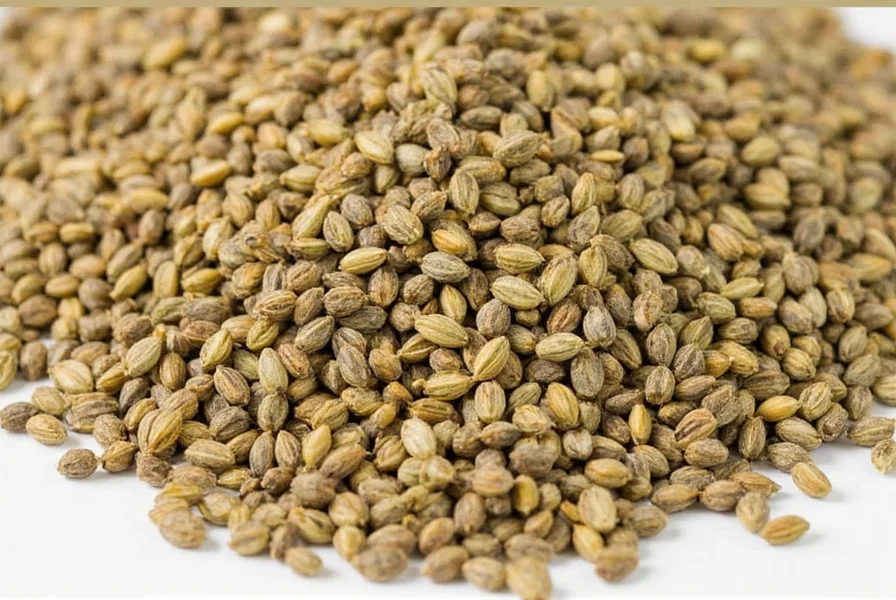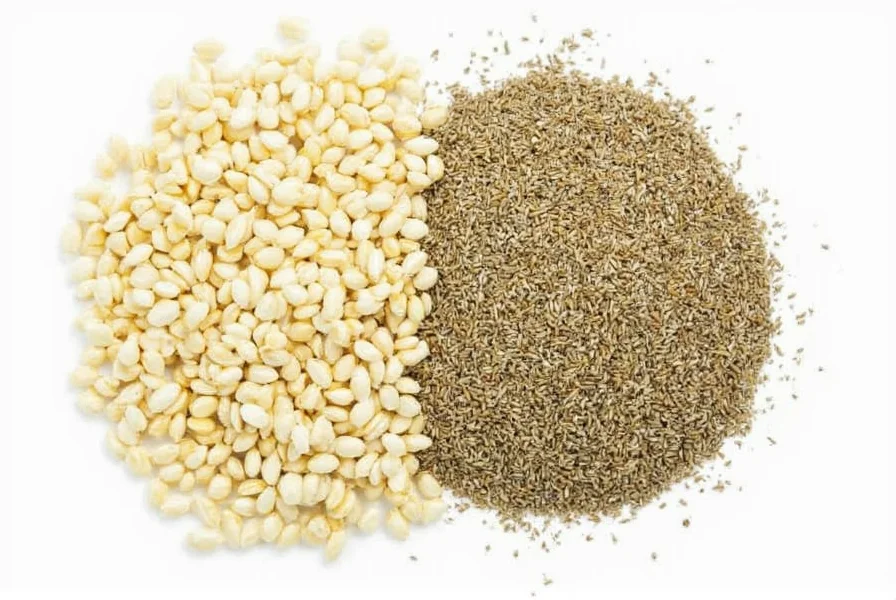When your recipe calls for fennel seeds but your spice cabinet comes up empty, knowing effective fennel seed replacement options becomes essential. Whether you're preparing traditional Italian sausage, Indian curry, or Scandinavian baked goods, the right substitute can save your dish while maintaining authentic flavor profiles. This guide explores practical alternatives that home cooks and professional chefs can use when fennel seeds aren't available.
Understanding Fennel Seed Flavor Profile
Fennel seeds deliver a distinctive sweet licorice flavor with subtle notes of citrus and mint. This complex profile makes them challenging to replace perfectly, but several alternatives can approximate their taste in different culinary contexts. The key to successful substitution lies in understanding both the flavor characteristics and the role fennel seeds play in your specific recipe.
Top Fennel Seed Replacement Options
Anise Seeds: The Closest Flavor Match
Anise seeds offer the most similar licorice-like flavor to fennel seeds, though they're slightly sweeter and more intense. When using anise as a fennel seed replacement, start with a 3:4 ratio (¾ teaspoon anise for every teaspoon of fennel seeds) and adjust to taste. Anise works particularly well in Italian sausage recipes, breads, and desserts where the pronounced licorice flavor is desirable. For those searching for natural fennel seed substitute for cooking, anise provides the most authentic flavor experience.

Dill Seeds: The Milder Alternative
Dill seeds provide a more subtle flavor profile with grassy, citrus notes that work well when you need a less pronounced licorice taste. Use a 1:1 ratio when substituting dill for fennel seeds in pickling recipes, potato salads, or fish dishes. While dill lacks the sweet licorice component, it shares fennel's bright, fresh quality that enhances many Mediterranean and Eastern European dishes. This makes dill an excellent substitute for fennel seeds in pickling recipes where overwhelming licorice flavor would be undesirable.
Caraway Seeds: For Earthy Applications
Caraway seeds share fennel's licorice notes but with a more earthy, peppery character. They work particularly well as a fennel seed replacement in rye bread, sauerkraut, and certain European sausages. Use a 1:1 ratio when substituting caraway for fennel seeds in these applications. The flavor difference is noticeable but complementary in dishes where fennel plays a supporting rather than starring role. For home bakers searching for fennel seed alternative for rye bread, caraway provides the most authentic traditional flavor.
Cumin: The Unexpected Substitute
While cumin lacks the licorice notes of fennel, its earthy warmth can work surprisingly well in certain applications, particularly in Indian and Middle Eastern cuisine. Use cumin at a 2:3 ratio (⅔ teaspoon cumin for every teaspoon of fennel seeds) in curries, stews, and spice blends. This substitution won't replicate fennel's flavor but creates a different yet delicious profile that works well in many savory dishes. For those exploring spice substitutes for fennel seeds in Indian cooking, cumin offers an authentic alternative when combined with other spices.
| Substitute | Flavor Profile | Best Ratio | Ideal Applications |
|---|---|---|---|
| Anise seeds | Strong licorice, sweet | ¾:1 | Italian sausage, breads, desserts |
| Dill seeds | Grassy, citrus, mild | 1:1 | Pickling, salads, fish dishes |
| Caraway seeds | Earthy, peppery licorice | 1:1 | Rye bread, sauerkraut, European sausages |
| Cumin | Earthy, warm | ⅔:1 | Curries, stews, spice blends |
| Fennel pollen | Concentrated fennel flavor | 1:1 | Garnishes, finishing dishes |
Specialty Substitutes Worth Considering
Fennel Pollen: The Premium Option
Fennel pollen, sometimes called "fennel flower," offers the most concentrated fennel flavor available. Though significantly more expensive than fennel seeds, it works as a perfect 1:1 replacement when you need intense fennel flavor without the seed texture. Use it as a finishing spice rather than cooking it into dishes, as heat diminishes its delicate flavor. For chefs seeking high-end fennel seed substitute for gourmet cooking, pollen provides unmatched authenticity.
Fennel Fronds: The Fresh Alternative
When you have fresh fennel but no seeds, the feathery fronds can serve as a substitute in certain applications. Chop them finely and use 2 tablespoons of fronds for every teaspoon of seeds in salads, garnishes, or as a finishing touch. While they lack the concentrated flavor of seeds, they provide the characteristic fennel aroma. This works well for those needing fresh fennel substitute for dried fennel seeds in non-cooked applications.
Recipe-Specific Substitution Guidance
Certain dishes require more thoughtful substitution than others. For Italian sausage recipes, where fennel plays a starring role, anise seeds provide the closest approximation. In Indian cuisine, where fennel often appears in garam masala blends, cumin combined with a pinch of star anise creates a more authentic flavor profile. For Scandinavian cardamom buns that traditionally include fennel, dill seeds offer a milder alternative that won't overpower the delicate spice balance.
When substituting in baking applications, remember that ground substitutes behave differently than whole seeds. If your recipe calls for whole fennel seeds but you're using a ground substitute, reduce the quantity by 25% to avoid overwhelming the dish. This consideration is crucial for those implementing fennel seed replacement in baking recipes where spice balance affects texture and rise.
What NOT to Use as Fennel Seed Substitutes
While many spices can work in specific contexts, some make poor fennel seed replacements. Avoid using fennel powder as a direct substitute, as it's significantly more concentrated and can easily overpower dishes. Similarly, star anise used in whole form creates an entirely different texture experience, though a small amount of ground star anise can work in certain applications. For those seeking common mistakes in fennel seed substitution, understanding these limitations prevents disappointing results.
Creating Your Own Custom Spice Blend
For the most versatile fennel seed replacement, consider creating a custom blend tailored to your specific recipe. Combine equal parts anise and caraway seeds for Italian sausage applications, or mix dill with a pinch of cumin for Mediterranean dishes. Store your custom blend in an airtight container for up to six months. This approach works particularly well for those developing personalized fennel seed substitute recipes for frequently prepared dishes.
FAQ: Fennel Seed Replacement Questions
Can I use fennel powder instead of fennel seeds?
Fennel powder works as a substitute but requires careful measurement. Use ¾ teaspoon of fennel powder for every 1 teaspoon of whole fennel seeds, as the concentrated powder delivers more intense flavor. Be cautious not to overuse, as powdered spices can easily dominate a dish. This substitution works best in cooked applications rather than as a finishing spice.
What's the best fennel seed replacement for Italian sausage?
Anise seeds provide the closest flavor match for Italian sausage recipes, used at a ¾:1 ratio (¾ teaspoon anise for every teaspoon of fennel seeds). For a more complex flavor profile, combine equal parts anise and caraway seeds. Some sausage makers also add a small pinch of ground star anise to enhance the licorice notes without overwhelming the meat.
How do I substitute fennel seeds in baking recipes?
In baking, use ¾ teaspoon of anise or dill seeds for every teaspoon of fennel seeds called for in the recipe. For Scandinavian cardamom buns or other delicate pastries, dill seeds provide a milder alternative that won't overpower the subtle spice balance. Remember that ground substitutes should be reduced by 25% compared to whole seed measurements to prevent flavor dominance in baked goods.
Can I use fresh fennel instead of fennel seeds?
Yes, fresh fennel can substitute for seeds in certain applications. Use 2 tablespoons of finely chopped fennel fronds for every teaspoon of seeds in salads or as a garnish. For cooked dishes, you'll need significantly more fresh fennel bulb (about ¼ cup chopped per teaspoon of seeds), but the flavor profile will differ. This works best as a fresh fennel substitute for dried fennel seeds in non-traditional recipes where exact flavor replication isn't critical.











 浙公网安备
33010002000092号
浙公网安备
33010002000092号 浙B2-20120091-4
浙B2-20120091-4